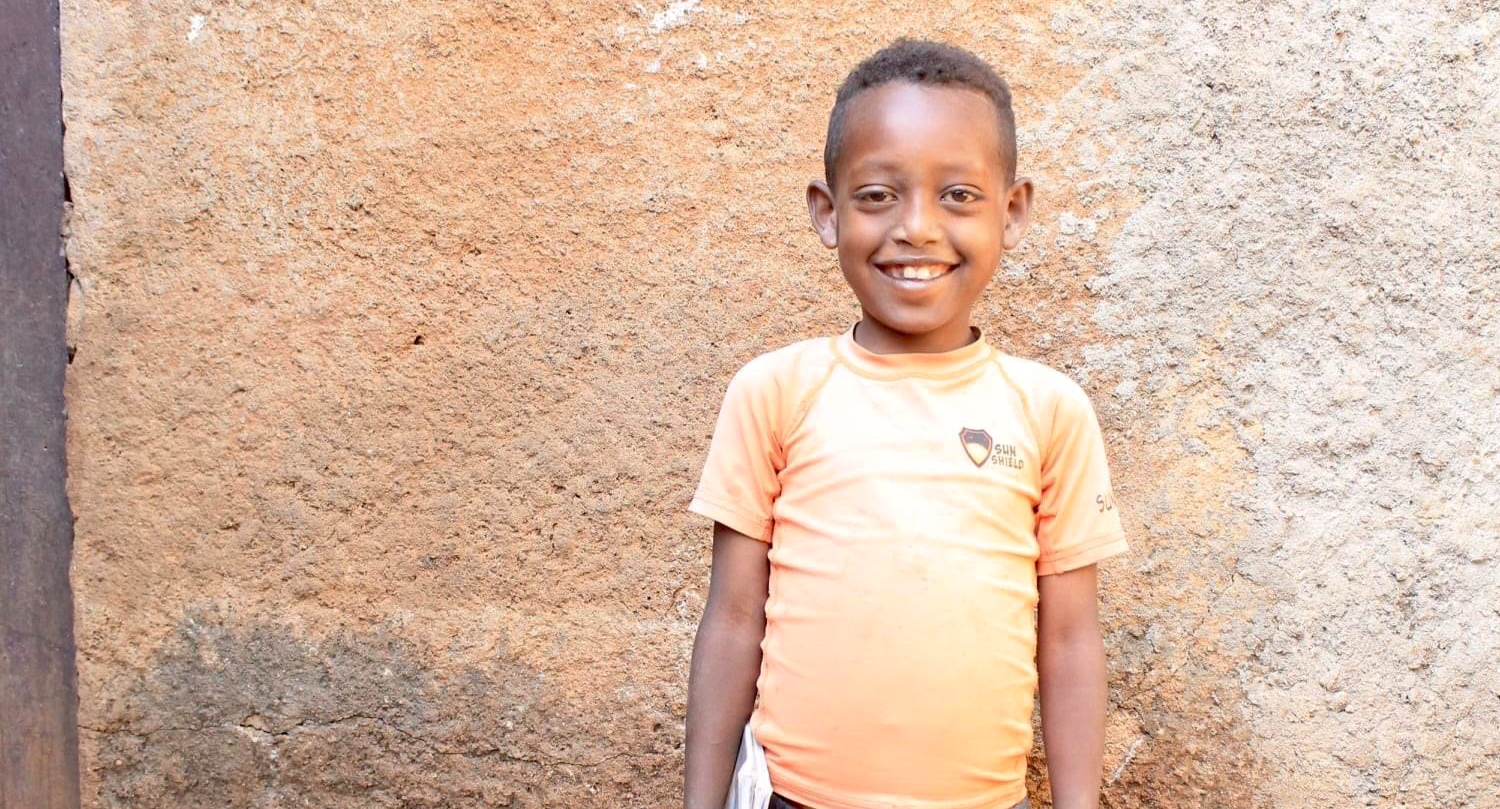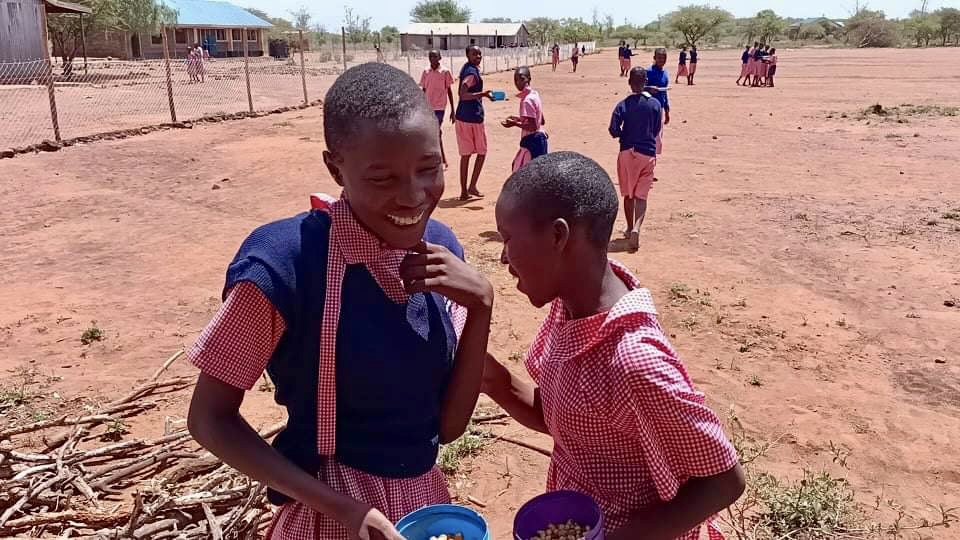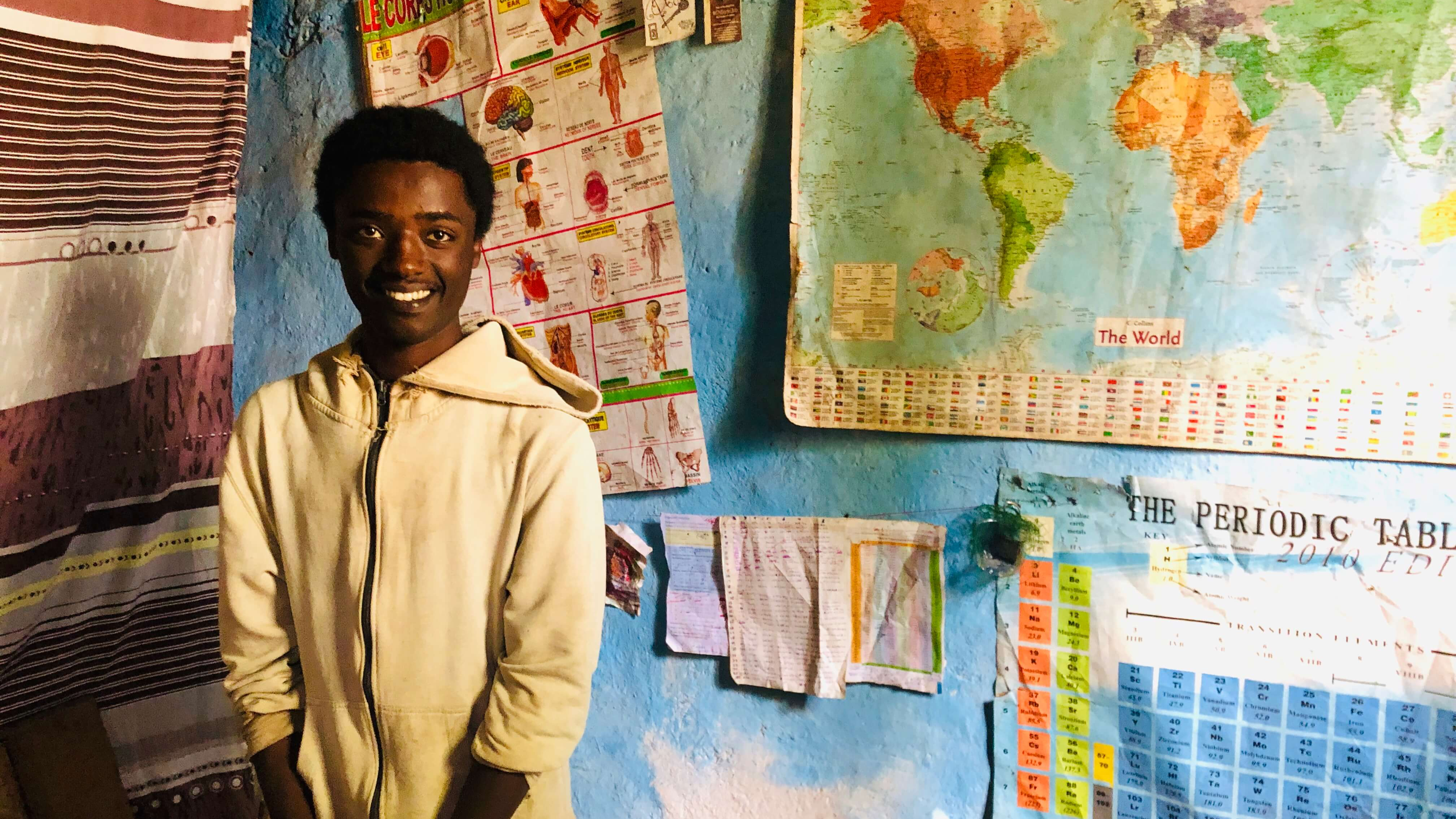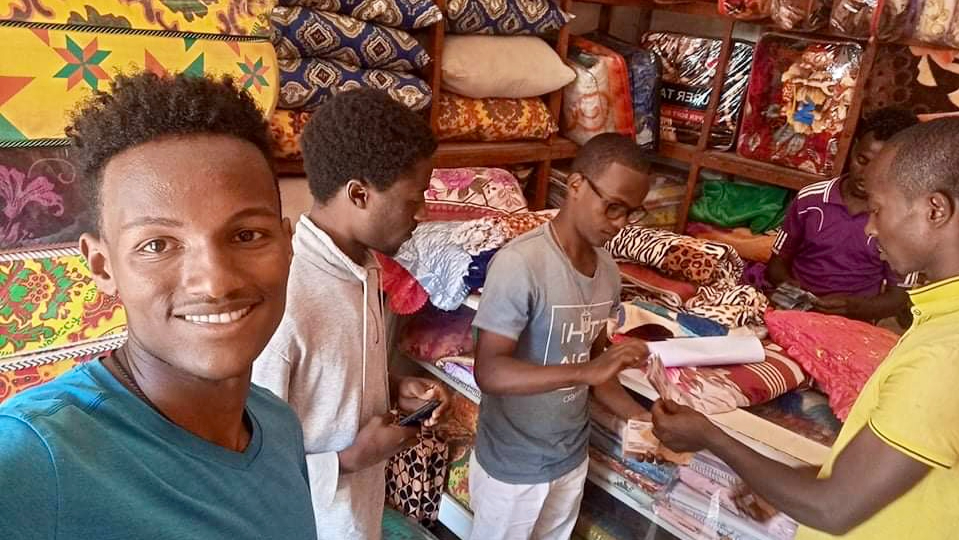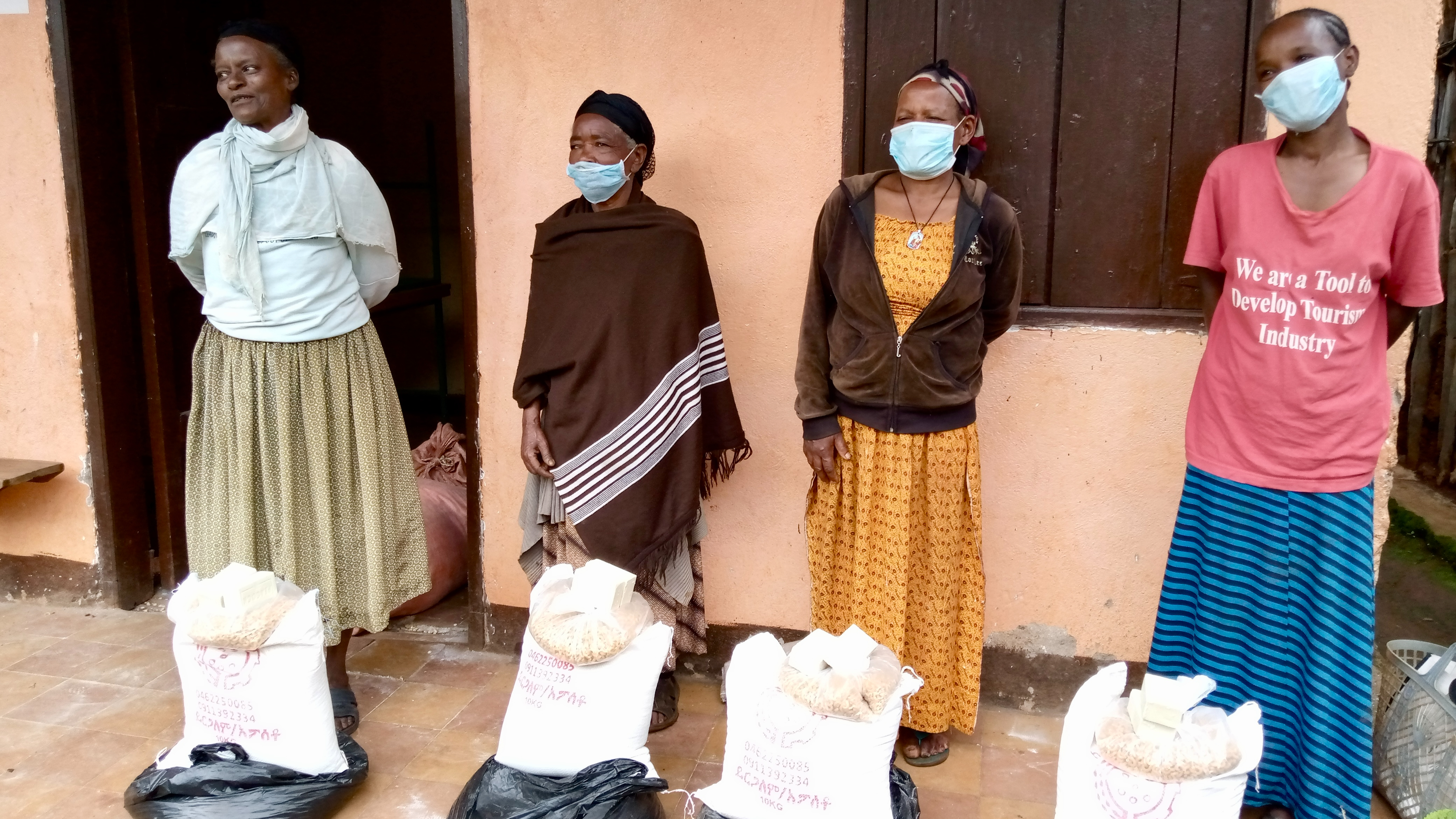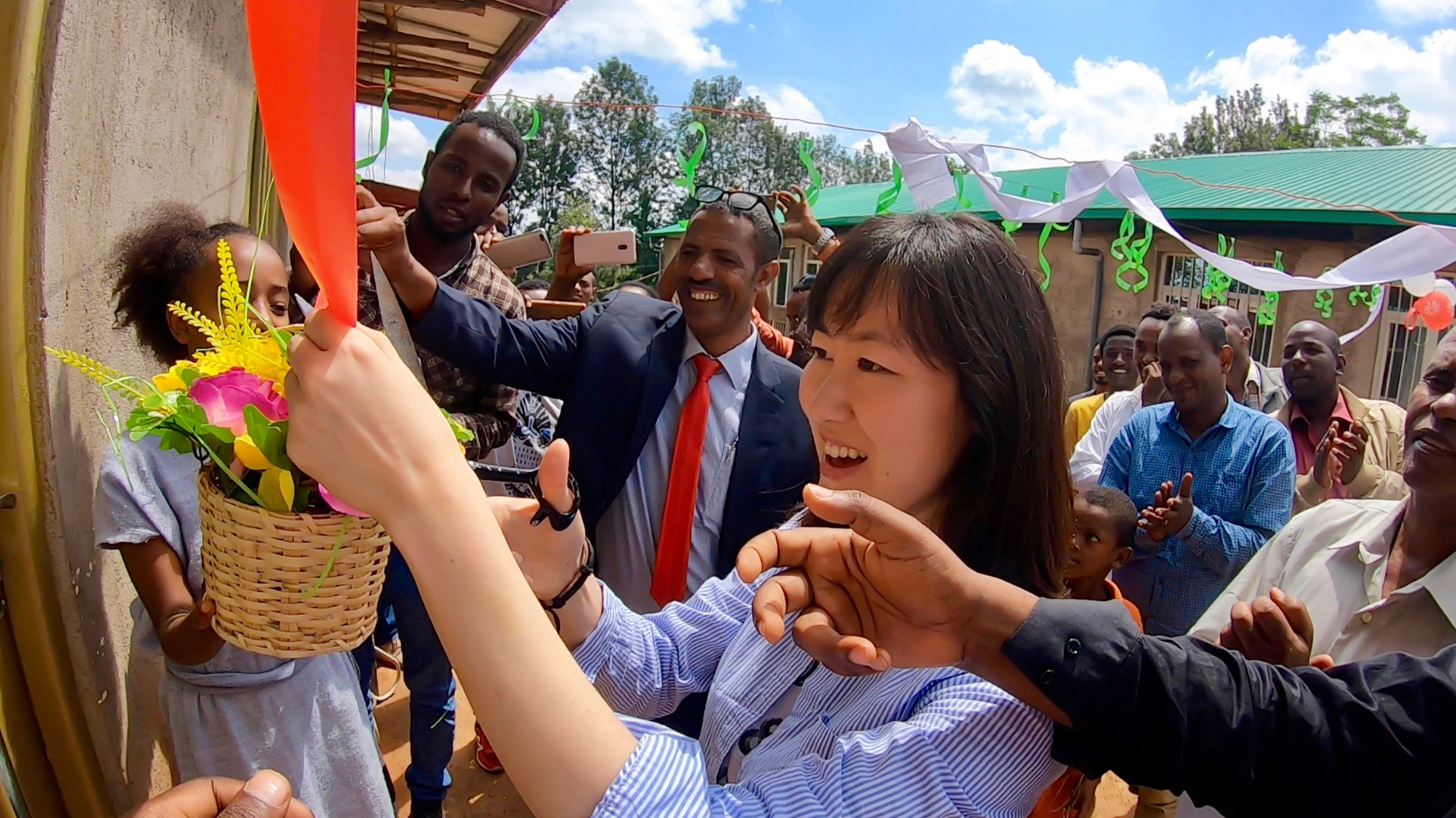
1) What specific trips to Ethiopia, in which you could refer to as a past interesting experience, one which might embody or resemble your organization’s main mission and efforts?
In 2016, I sponsored a boy from Ethiopia. After some time, I learned that he had dropped out of school to become a day laborer. I decided to travel to Ethiopia to see the situation for myself and to meet my sponsored child. When I entered his small town in southern Ethiopia, I saw children with ragged clothes, walking barefoot on unpaved, muddy roads littered with garbage. The houses were made of mud with corrugated iron roofs. It was a place where I felt dreams could not flourish without substantial help.
I spoke with many people in the town who articulated a desire for a space where children could gain critical thinking skills and learn occupational skills that they would use to build a better life for themselves. It was at that point that a dream of creating a school computer lab started to grow in my heart.
I returned to the U.S. with a goal that no other children in that town should have to forgo their studies in order to do daily labor. After a year of research and preparation, I determined that we needed to establish an international nonprofit agency led by supporting members, local partners, and volunteers who would team up with a school to support and train teachers and track students’ progress. Dream For the Future was founded in August 2018.
We established our first e-learning lab in a rural school in Sidama, Ethiopia. We held a training workshop on eight methodologies that demonstrated how to adapt digital technology to schools.
We believe every child needs access to a quality education. Without a quality education, our children face a very bleak future. With the support of our dedicated local partners and volunteers, DFTF is committed to providing greater educational opportunities to children living in poverty.
2) When you send volunteers to the needy communities of families and children in Ethiopia and abroad, what can be expected? Before and after implementing your organization’s and volunteer’s efforts and assistance?
When DFTF arrives in a new community, we visit a few schools to conduct research and find out their exact needs. For example, we interview students and school directors and discuss the option for an e-learning lab project. At first, many students did not want to speak with us because they said many people in the past had come with good intentions, but without the ability to generate results.
Students did take an interest, however, in having access to a digital library computer lab. We found that the schools we visited were using reference books from pre-World War II. There were many local children doing jobs such as washing cars, shining shoes, and carrying firewood. Many of them children had already dropped out of school to support their families or had lost interest in education. We wanted to create an environment that gave children the permission to dream bigger.
After a year of planning, we equipped a school classroom with e-learning technologies by providing a library of digital content, a projector, speaker, and printer.
With the E-Learning Lab, students in rural schools have access to learning about computers with a RACHEL server. RACHEL (Remote Area Community Hotspot for Education and Learning) provides an internet-like experience for students to access the world’s best free educational websites including Wikipedia, Khan Academy, and over 100 more. RACHEL turns these remote, rural labs into a learning center for students in the communities.
3) How does your organization become notified when people need help? Is there a specific location where the volunteers establish themselves once on site in the needy communities? Is there a specific number of people who can be reached, or do you not reach all of them?
We use the following multi-step approach: First, we partner with school officials and rural communities deeply committed to providing a quality education to their children and young people. They identify the needs of the town and we work closely with them to come up with a proposal.
Next, we equip our classrooms with the right resources such as computers, software, and an internet connection installation. After that, we continue to provide ongoing support and resources while also monitoring overall performance to ensure our students are receiving a high-quality educational experience.
Lastly, we provide progress reports and newsletters to donors that explain the latest project milestones and achievements.
Through phone, email, and chat we frequently communicate with our community partners, e.g., school directors, teachers, and people who used to work in NGOs, because they know the needs of the town well.
4) What kinds of things does this organization provide for the needy communities of rural Africa, more specifically than just the broader terms of education, etc.?
The overarching goal of Dream For The Future is to reduce poverty by taking advantage of educational technology. We do this by equipping school classrooms in rural communities throughout Africa with e-learning technologies that improve the quality of education by providing up-to-date educational resources.
We train school teachers to apply eight key methodologies for how to use a digital library in a classroom. Our local partners monitor the classroom and track the progress of students to measure the impact and our program. We also provide ongoing support, including IT maintenance and classroom supplies.
DFTF’s E-Learning Lab is set up to enhance the teaching and learning of Information and Communication Technology (ICT), STEM education, PC Basics, Microsoft Office Suite, and Photoshop.
We also coordinate another program that teaches skills to unemployed young people to better prepare them to enter the workforce more successfully.
However, we are not strictly an educational technology organization; we assist in livestock income generation for orphaned children or children of HIV positive mothers to generate income and to help them go to school.
5) Is there ever a time where volunteers find themselves in danger? Has any danger ever been faced as a potential threat during your time volunteering? If so, what kinds of dangers are potentially possible if one is to go to these countries? If not dangers, then signs of gratitude from those who’ve been helped?
While we have never encountered situations that put us in mortal danger, we have faced electricity, food and water shortages, and sanitation issues, just as you might in many underserved rural areas around the globe.
I remember the gratitude we received during our first trip to Ethiopia to install a computer lab. The ceremony to hand over the equipment was overseen by Abebe Bolka, Minister of Yirgalem City Administration Education Office. At the launch of the computer lab, Abebe commended the partnership between DFTF and Ethiopia, noting that Yirgalem Town was proud to be a beneficiary of such a facility. A ribbon-cutting ceremony followed the speech and we each received a gift of traditional Ethiopian clothes and were invited to an appreciation lunch held in our honor.
Click here to read the Interview Series, Part 2, Jenny Kim, Founder of DFTF
Category

